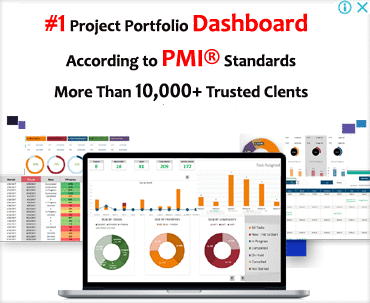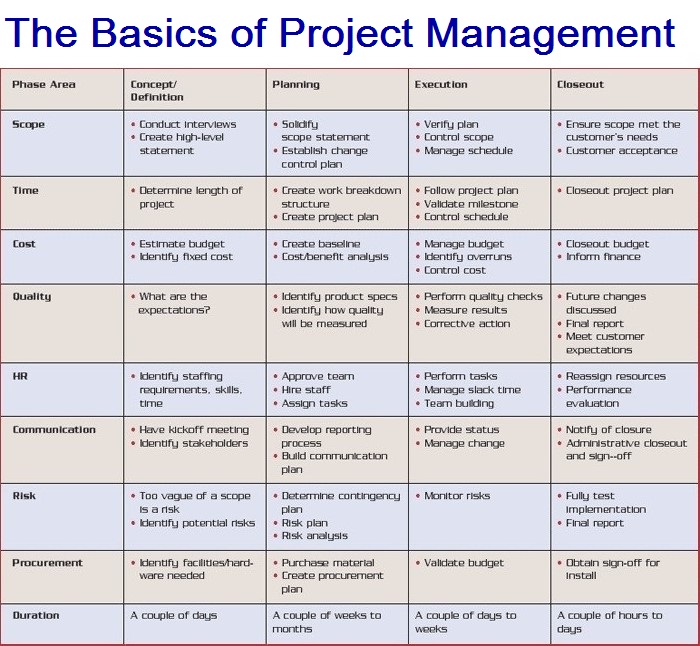 Monday morning has just started. Your executives invite you to a meeting to talk about some key initiatives they want to achieve this quarter. You are in charge of making a handy project plan for your team to use to carry out these projects. They need it to be done by the end of the week. But where to begin?
Monday morning has just started. Your executives invite you to a meeting to talk about some key initiatives they want to achieve this quarter. You are in charge of making a handy project plan for your team to use to carry out these projects. They need it to be done by the end of the week. But where to begin?
What Is The First Step In Project Management?
Don’t panic! You don’t need to know everything about project management basics to execute a successful project plan. Follow these six steps to create a project management plan and lead your team with confidence.
CLICK HERE TO DOWNLOAD 300+ PROJECT MANAGEMENT TEMPLATES & DOCUMENTS IN EXCEL
6 Steps to a Foolproof Project Plan
Here are the project management basics for successful project plan.
Step 1: Identify Stakeholders And Meet With Them.
A stakeholder is anyone who has a stake in how your project plan turns out. That includes your customers and other end-users. Make sure you identify who all the stakeholders are and keep their interests in mind when making your project plan.
Meet with the project sponsors and key stakeholders to talk about their needs and expectations for the project, and to establish up a baseline scope, budget, and timeline. Then, create a scope statement document to finalise and record project scope details, make sure everyone is on the same page, and reduce the chances of costly miscommunication. Cost control, in particular, is very critical at this stage of the process.
Tip: Look beyond what the stakeholders say they want to identify out what they really want. The goals of your project should be to bring about these benefits.
Step 2: Make A Set Of Goals And Rank Them.
Once you have a list of stakeholder needs, you can rank them and set specific project goals. These should list the project’s goals or the metrics and benefits you hope to achieve. In your project plan, write down your goals and the needs of the people who will be affected by them. This makes the plan easy to understand and easy to share.
Tip: If you can’t figure out what to do first, rank your goals by how important and how quickly they need to be done. You can also check out these tips for making decisions.
CLICK HERE TO DOWNLOAD 9000+ PROJECT MANAGEMENT TEMPLATES & DOCUMENTS IN EXCEL
Step 3: Define Deliverables
Identify the deliverables and planning steps for the project that are needed to meet the project’s goals. What specific outputs are you expected to produce?
Next, guess when each deliverable in your project plan will be due. (You can finalise on these dates when you sit down in the next step to define your project schedule.)
Tip: Set firm milestones for essential deadlines and deliverables. Once work starts, you’ll be able to keep track of your progress to ensure complete you finish tasks on time and keep stakeholders happy.
Step 4: Create A Schedule For The Project
Look at each deliverable and list the tasks that need to be done in order to complete it. For each task, figure out how long it will take, what resources you’ll need, and who will be in charge of doing it.
Next, identify any dependencies. Do you have to complete some tasks before you can begin others? Input deliverables, dependencies, and milestones into your Gantt chart, or choose one of the many online templates and apps that are available. Make sure you also know how to write a project management report so you can get an overview of how the project is going right now.
Tip: Get your team involved in planning. People who do the work know a lot about how tasks are done, how long they’ll take, and who is the best person to do them. Use their knowledge. You’ll need them to agree on the project schedule and expectations for work to go smoothly.
Step 5: Look For Problems And Do A Risk Assessment.
No project has no risks. You won’t get anywhere by crossing your fingers and hoping for the best. Do you know of any issues, like a key team member’s upcoming vacation, that will change the way the project is planned? What kinds of unforeseen circumstances could create hiccups? (Think about international holidays, parts that are backordered, or busy times.)
When making a plan for a project, you should know how to deal with risks and think about what steps you should take to either stop certain risks from happening or lessen the damage they cause. Do a risk assessment and come up with a plan for managing risks to make sure you’re ready.
Tip: If you can, work on high-risk parts of your project early on. Or, create a small buffer of time around the task to help your project stay on track if something goes wrong.
Step 6: Present The Project Plan To The Stakeholders Who Matter.
It is important that you understand how to present a project well. Explain how your plan meets the needs of stakeholders and how you’ll handle any conflicts. Make sure your presentation isn’t just about one thing. Instead, have an open discussion with the stakeholders who matter.
Next, you need to determine who will do what: Who needs to see what reports, how often, and why? What decisions will need to be approved, and by whom?
Make sure your project plan is clear and easy for everyone to find so they don’t have to bother you for simple updates. Putting all the information about a project plan in one place, like a collaboration tool, makes it easy to track progress, share updates, and make changes without having to schedule a bunch of meetings.
Communicate well. Make sure all stakeholders know exactly what is expected of them and what actions they need to take. Even if it seems obvious to you, that doesn’t mean it’s obvious to them.
Not looking forward to talking with your stakeholders in an open discussion?
Here are some strategies to arm difficult stakeholders and keep the project planning process moving.
Tip: If your plan or schedule doesn’t match what stakeholders expected at first, tell them now so there aren’t any nasty surprises or tense conversations later. CLICK HERE TO DOWNLOAD 300+ PROJECT MANAGEMENT TEMPLATES & DOCUMENTS IN EXCEL
CLICK HERE TO DOWNLOAD 300+ PROJECT MANAGEMENT TEMPLATES & DOCUMENTS IN EXCEL


Excellent
Great information!
The way it should be done but is not always done
Great tips in a nutshell!
Good information
Stay up-to-date related details with project management
Regards
Eng. Luay Francis